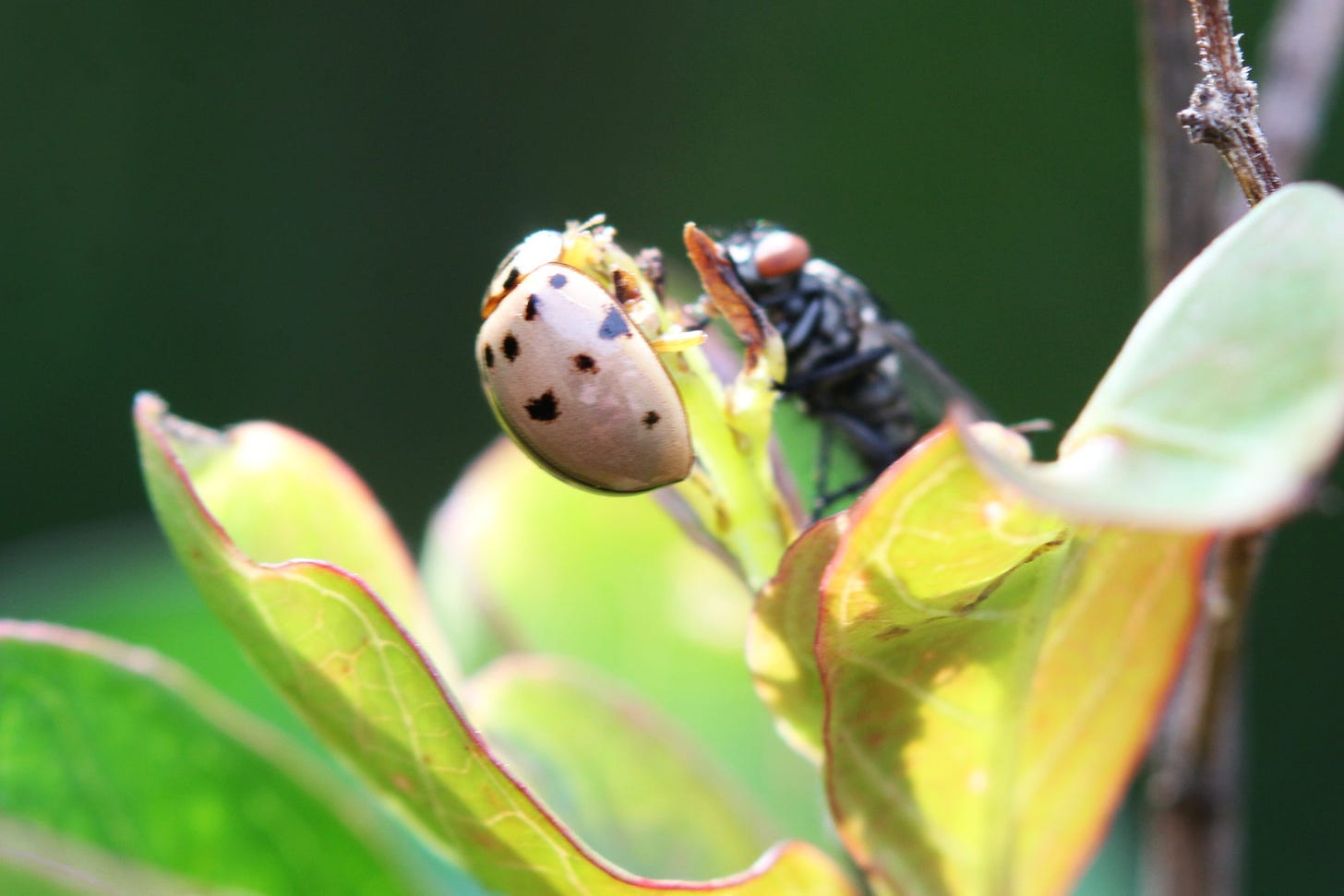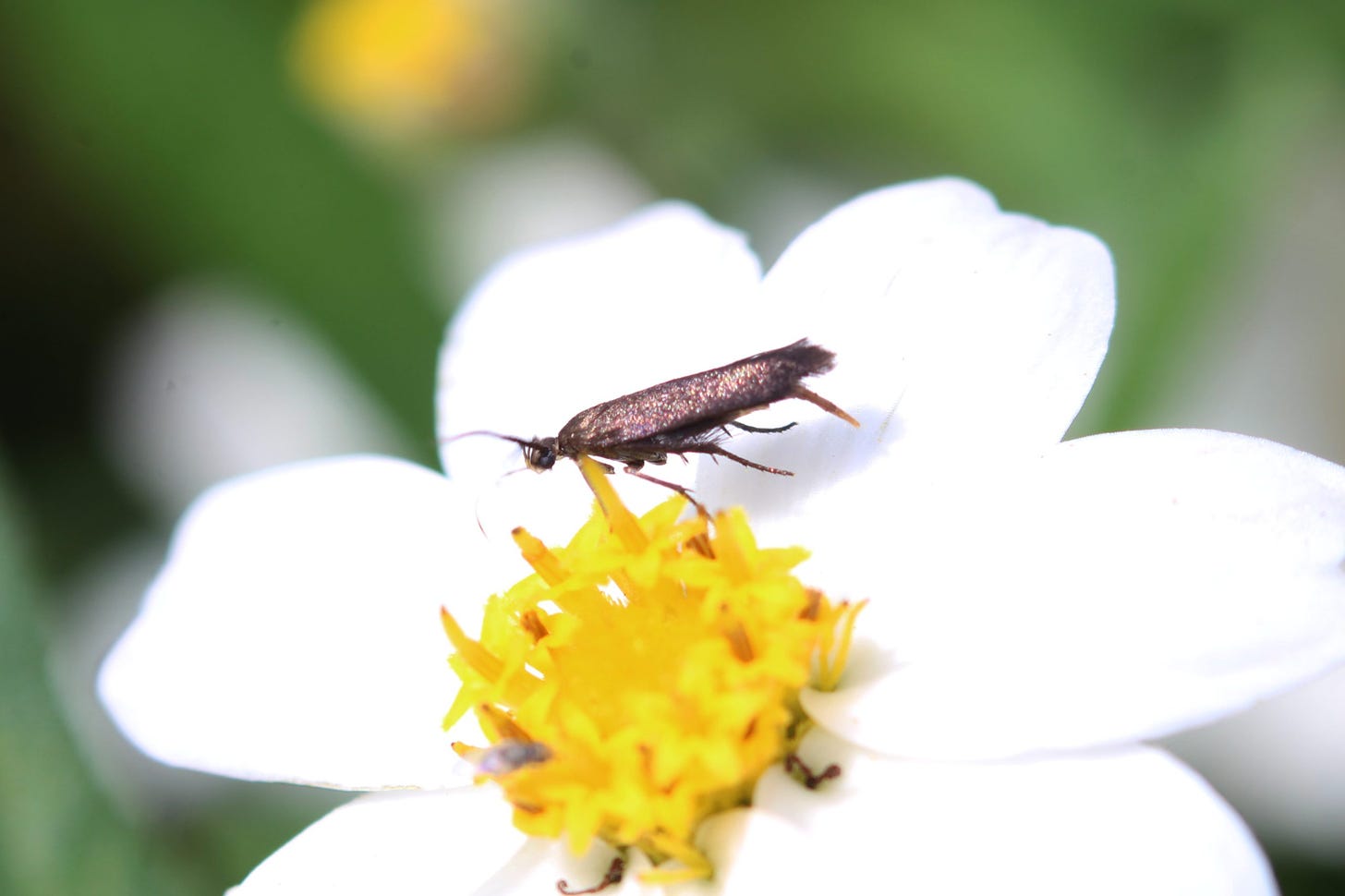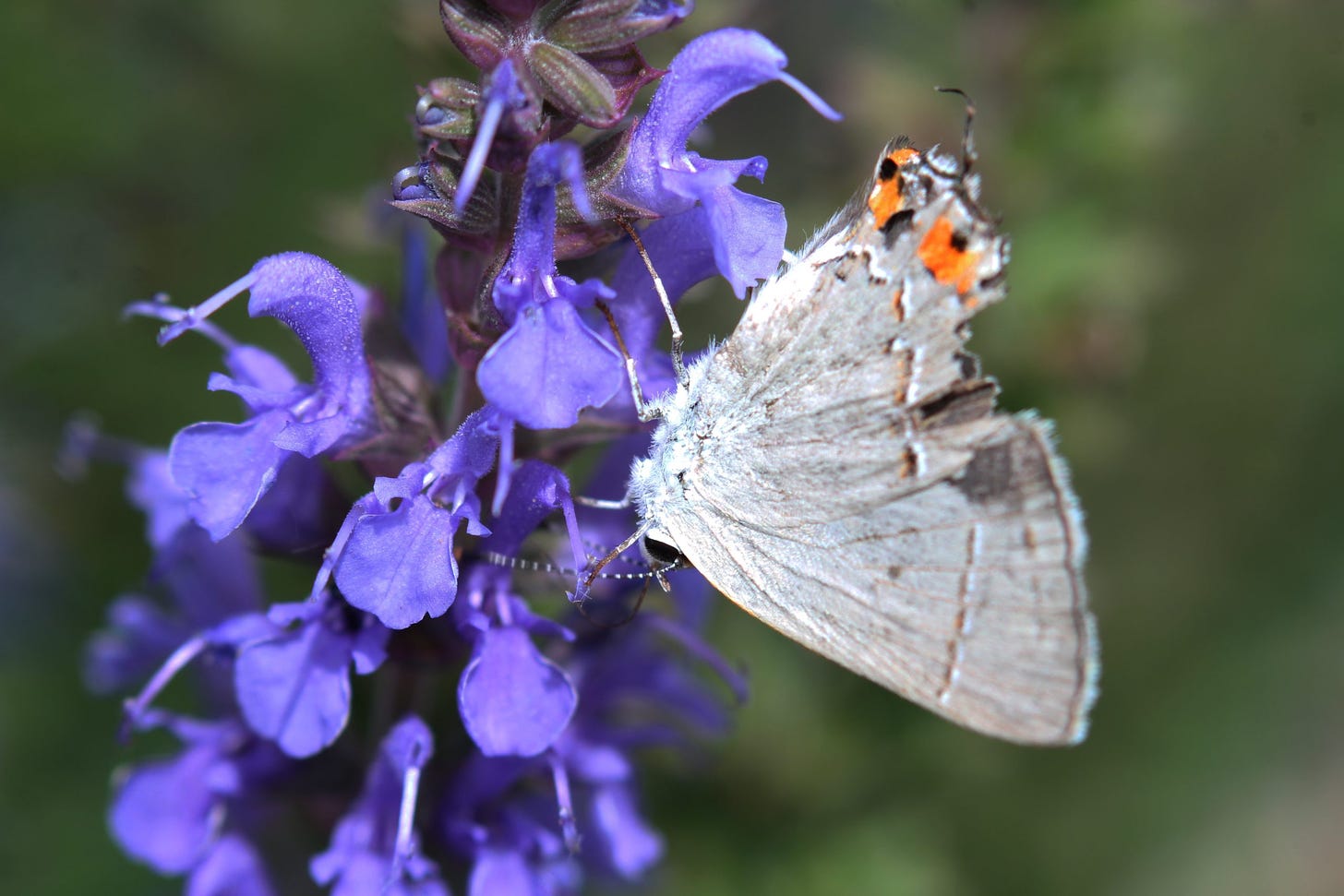Bug Safari
I had promised myself that if I got through the editing and uploaded the working files for the upcoming book (Postcards from Foolz, due out from Raconteur Press this coming Friday) that I'd put a macro lens on the camera and go prowl the garden for a while.

Ants busy pollinating one of my strawberries.
The thing about the lens I chose for this little expedition is that it's my manual macro lens. A vintage FD 100mm 1:4, made in Japan, it's so smooth and fun to use, it's easy to forgive it the difficulty of shooting in manual focus.

An immature assassin! This is the nymph form of the Assassin Bug.
The thing is, I only shoot freehand, and out in the garden. What I have to do is dance with the bugs I'm using as my models. Lean in, balancing my weight, steady, then press the button. Do it again, adjusting by a fraction of an inch, to try and get a crisp exposure. Maybe a third or fourth time if there's a breeze. Rocking back and forth, feeling my weight shift and the camera balance. It's a very small, slow dance, but it's good when it all comes together.

Gray Hairstreak on Coreopsis
Why do I like the manual lens? Because I'm bringing the focus to the insect. I can set the lens where I want (I'm also using auto-adjust to set ISO and shutter speed, as I don't have time to set those every exposure) in terms of 'close' and then I lean towards my subject until it pops into focus and can instantly take my shot. With practice, this is much faster than waiting for autofocus to do it's thing (and arguing with it when it doesn't want to focus on the subject I have centered).

A crab spider lurking on the much-visited blue sage.
The manual macro is fun, fast, and frustrating. I'll think I have a beautiful shot, and then I load the images onto the big screen and I missed it by that much. Nor can I go back out and try for it again. This is why I take multiple shots when I can.

A different individual than the last crab spider, this one is on a Persimmon seedling where she'd gotten fat on the aphids that love the tender shoots.
Sometimes, I can't get more than one shot. If I fail at that exposure, it's maddening. It's life as a macro photographer. You don't get all of them.

Oh, you little beauty! I'm very fond of the bluebottle flies at this range. So gorgeous.
But then, that's the sport of it. I can have really great days where I get my shots. And I can have days where the sun hides, and with it's receding warmth, so do the bugs. Or days my hands have enough tremble I can't focus. But the days where I get something amazing make it all worth while and get me to do it again and again.

This Ashy-grey Lady Beetle is sharing space on a Crape Myrtle twig with a tachnid fly. The ladybeetle is after aphids, the fly is after a sweet exudate the plant produces.
Other than bugs and flowers, it's really fun to use the macro lens for creating abstract images. Like the shading colors of the tropical hibiscus blossom.

Hibiscus pollen ready for deployment onto a pollinator - the flower is designed for large ones, like hummingbirds.
When I'm shooting on a bug safari, the world both shrinks and expands. I become aware of the tiny movements, like the panicked flurries of lacewings from under the hackberry leaves, or the flitting hoverfly who poses on a nearby leaf before vanishing in search of a flower. I'm not looking at the big picture any more.

A posing hoverfly. Likely one of the Calligrapher Flies, it's a good garden friend, as the larvae are predators of thrips and other tiny pests.

This little moth on a Blackfoot Daisy is glittery in the sunlight when you get this close. Little brown moths are very difficult to identify, so they tend to get lumped as 'micro moths.'

A juvenile grasshopper, possibly a Spur-throated.

A Common Damsel juvenile on one of my cucumber blooms. Hopefully not planning to use those piercing mouthparts on my garden!

The Peggy Martin Climbing rose is just beginning to bloom. So pretty and pink.

A Fiery Skipper is fluffy and almost feathery up close and personal.

There were several of the tiny Gray Hairstreaks on this sage, to my delight. My plantings are already attracting pollinators of all shapes and sizes.

The focus was on this tiny bee, and only after I took the shot, I realised there was a true bug waiting it's turn on the ray petal.




